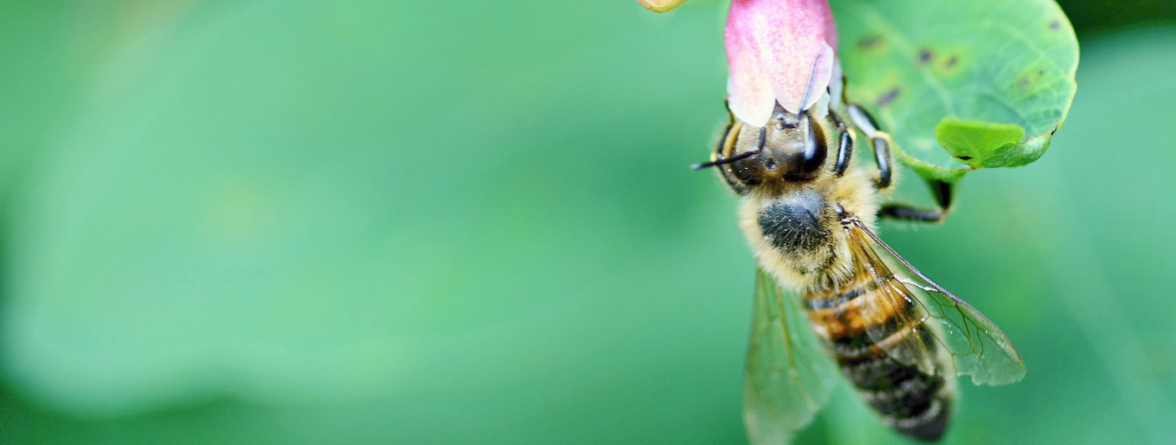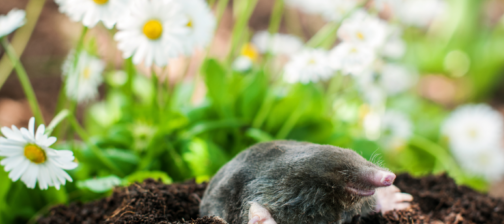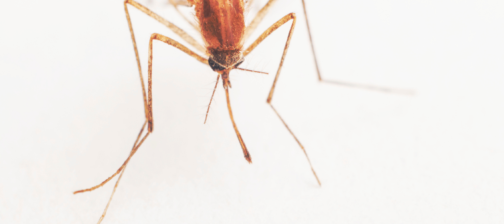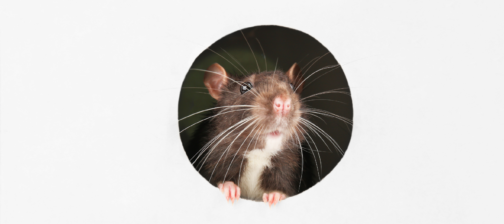Springtime on Hilton Head Island is when our focus shifts to spending more time outside, with gardening (floral and veggie) being a popular pastime. When you find bugs in your garden, your first instinct might be to destroy them, but that is not always the best course of action. Although there are a number of bug species that are bad and/or detrimental to your garden, there are also a number of species that are extremely beneficial. There are approximately 1.5 million known insect species in the world, and more than 97 percent of those are beneficial to gardens. That’s great news!
Before we get into the nitty gritty surrounding good vs. bad bugs in your garden, it’s important to know why each species has been categorized as such.
What Makes an Insect Good For Your Garden?
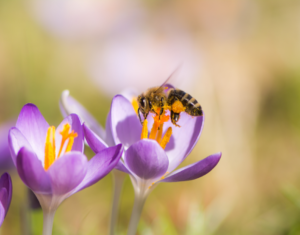
Bees act as pollinators and are essential to the success of your garden and/or crops.
There are many more species of bugs that are good for your garden than bad. That’s great news! What makes most of these species beneficial is that they perform vital functions in the environment. More than 75% of crops, and an equal number of flowering plants, rely on insect pests to distribute pollen. Bees, butterflies, moths, and even beetles and flies pollinate plants. It is projected that every year in the United States, honeybees alone pollinate close to $15 billion in crops!
Good bugs for your garden fall in to 3 different categories:
- Parasitizers: Parasitizers are similar to predators in that they prey on other bugs. However these guys lay their eggs on or in the bad bugs. When the eggs hatch, the larvae feed on the host insects. Parasitic wasps – like the braconid wasp – are the main member of this category.
- Pollinators: As mentioned above, we depend on these bugs – such as bees, butterflies, flies and moths – to pollinate our garden’s flowers and crops.
- Predators: Bugs like ladybugs, praying mantises, and green lacewing are examples of beneficial bugs that eliminate other pests by eating them.
Bugs also perform the very important task of aerating soil and breaking down dead plant materials and returning them to the earth. They also serve as food for a lot of wildlife. A big benefit of some species of good bugs, such as ladybird beetles, is that they also eat harmful pests which in turn helps to keep the environment in balance.
What Makes an Insect Bad For Your Garden?
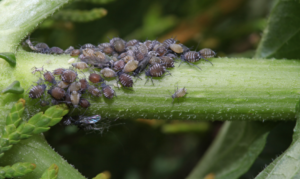
Aphids are the enemy of your garden! They weaken plant growth, cause leaves to yellow, curl or drop early.
Where there is good there is also bad, and although there are fewer species of bugs that are bad for your garden – they do still exist. Some attributes of bugs deemed bad for your garden include:
- They can transmit diseases
- These pests destroy the plant’s life-giving chlorophyll
- Some species suck out all of the sap from the stems and leaves of plants
- Their ability to tunnel in roots and fruits
- A number of bad bug species defoliate plants
The majority of damage caused by bad bug species is caused just by feeding. Keep in mind the above list only includes a small number of ways or reasons that some critters are harmful to your garden.
How to Identify and Manage Strange Insects in the Garden
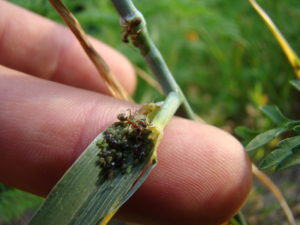
There are a number of online resources available to help with proper bug identification.
Not sure what to do when you spot an unknown insect in your garden? You definitely do not want to squash a good bug, but it is also not advisable to ignore a bad one. Follow these 3 steps to try to assess whether your insect friend is good or bad:
-
Observe.
Take a very close look and note what the bug is doing. Snap a photo on your phone if you can. If you notice the bug is eating and can see damage to your garden, it is likely a pest. Also take note if more than one insect pest is present. A large group of insects congregating on your plants is a good indicator of an infestation. The sooner you can verify this fact, the sooner you can get the problem under control!
-
Research and Identify.
If you snapped a photo of the bug, or captured the actual bug itself, compare it to images of insects on various expert websites. A few good references are:
We also suggest that you also look for images on websites maintained by the Entomology departments of various Universities. You can also contact the Beaufort County Cooperative Extension office – Clemson University to help with identifying the bug species you collected.
-
Use High-Quality Control Products.
There are a number of products on the market that you can use to control pests in your garden. It is important to read the label prior to application to ensure you select one that is most useful to you. Many products will harm any insect that it comes in contact with, which would rid your garden of good bugs as well. This is something you want to try to avoid..
The best advice we have is to utilize a range of smart strategies to ensure a balanced ecosystem is created within your garden. For every single bad bug that wants to destroy your plants, you should have 6 or 7 others ready to eat it or its larvae. Reference the bad bug chart above and locate some highly efficient assassins for hire to rid your garden of enemies!
Now, without further ado, check out our list of Good vs. Bad Bugs below. Print it out and keep it handy so next time you come across a critter in your garden you know what to do!
Good Bugs
| Bees | Ground Beetles | Butterflies | Ladybugs |
|
Green Lacewings |
Praying Mantis |
Earth Worms |
Braconid-Wasp |
| Syrphid Fly |
Spined Soldier Bug |
Bad Bugs
|
Ants |
Aphids | Bean Beetles | Termites |
|
Cabbage Moths |
Click Beetles |
Cockroaches |
Fruit Fly |
| Cut Worms |
Earwigs |

